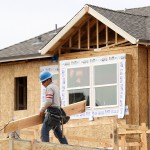Wood Products: Looking for Growth in Old Places
Idaho’s timber industry is another example of a sector that’s been a main-stay of the area economy since the state lines were drawn. Like mining, it’s seen big declines over the last couple of
decades. Idaho’s wood products industry is driven by lumber demand, which is a function of the housing market. The state Division of Financial Management is predicting incremental increases in both sectors of the economy starting this year. The DFM’s 2011 forecast said housing starts will increase 30 percent this year, 55 percent in 2012, 16.4 percent in 2013 and 13 percent in 2014. As those starts pickup, so too will the demand for lumber.
“This anticipated strong demand will act as a countervailing force to supply factors that have exerted relentless downward pressures on logging and wood products employment.” – Derek Santos, Economist, Division of Financial Management
Jay O’Laughlin is the Director of the Idaho Forest Wildlife and Range Policy Analysis Group at the University of Idaho. He said the key question is how long will it take for the state to work through its housing “overbuild.” “It will be more than a year,” said O’Laughlin, “less than five years, I’m confident of that.”
O’Laughlin ranks Idaho’s timber industry in second place, behind agriculture, as the most important driver in the state’s natural resource wheelhouse.
“Let me put it this way. When we look across all 50 states there are only three states that depend more on the economic output of the forest products industry than Idaho…Oregon, Mississippi and Maine,” said O’Laughlin.
But if people aren’t building new houses or businesses, how can the industry grow?
O’Laughlin said it’s because Idaho’s forests are sustainable. In other words, there will always be trees here.
“The opportunities are there to build with other things, steel, aluminum, with brick or stone — but all the other resources besides timber and wood products require more energy to produce.” – Jay O’Laughlin



